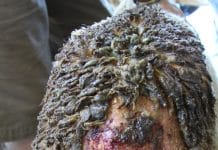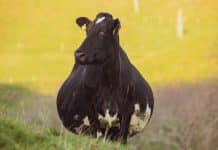
An antibiotic is an agent that can kill or slow down the growth of harmful bacteria in humans and animals. This useful drug is used throughout the world to safeguard animal health and production. It is for this reason that the preservation of the livestock industry, as well as food security and a safe food chain, is largely dependent on the responsible use of antibiotics.
The origin of antibiotics
Antibiotics were accidentally discovered in 1928 by Scottish bacteriologist, Dr Alexander Fleming. Unfortunately, it was a few years too late for the soldiers who died in the First World War – not on the battlefield, but because of infection.
Its discovery led to large-scale research and during World War II antibiotics were used for therapeutic purposes on animals; in the last years of the war it was also successfully used on humans.
When it comes to the responsible use of antibiotics in humans and animals, the main objectives are to:
- Ensure the efficacy of antibiotics.
- Prevent resistant bacteria from ending up among animals, or animals and humans.
- Ensure that antibiotic residues are not transferred to the food chain.
What is antibiotic resistance?
Antibiotic resistance is the ability of bacteria to resist treatment with an antibiotic. Sadly, antibiotic resistance around the world, including Africa, has risen over the years. This is mainly due to excessive or irresponsible use, which causes bacteria to mutate under pressure or absorb motile resistance genes from resistant bacteria in order to resist the effects of antibiotics.
According to Dr Moritz van Vuuren, emeritus professor in microbiology, global actions to address antibiotic resistance have not yet matched the scale of the threat and awareness should urgently be transformed into action. He believes a lack of regulatory control and the enforceability of drug control regulations are the reasons why antibiotics are so freely available in most African countries.
Once resistance develops, it accelerates in bacterial populations through the excessive or irresponsible use of antibiotics.
He also believes that antibiotic resistance is a social behavioural problem and that it spans more than just one sector of society. He therefore suggests a behavioural change in veterinarians and producers when it comes to prescribing and using antibiotics in accordance with the recommendations of the World Veterinary Association (WVA), namely using antibiotics where necessary, but as little as possible, for the purpose of animal welfare and food security.
Availability and overuse
Antibiotics are legally available over the counter; this also applies to South Africa where a large number of antibiotic products are registered under the Fertilizers, Farm Feeds, Agricultural Remedies and Stock Remedies Act, 1947 (Act 36 of 1947).
Dr Van Vuuren points out that over-the-counter agents lend themselves to excessive use on farms where biosecurity or livestock production management practices have not improved. This increases the transmission of pathogens between farms, which producers then try to address by the continued use of antibiotics.
The situation also applies to poor sanitary and socio-economic conditions, which are conducive to the development of resistance.
“These circumstances are usually ideal for creating a rich bacterial soup that promotes the exchange of resistant organisms and their transmissible genes. Once resistance develops, it accelerates in bacterial populations through the excessive or irresponsible use of antibiotics. It is therefore as clear as day that people need to start using less antibiotics, and only when really needed. This will contribute to preserving the efficacy of antibiotics when a real need arises.”
Future-oriented measures
One of the aims of the tripartite alliance between the World Organisation for Animal Health (OIE), World Health Organization (WHO) and the Food and Agriculture Organization (FAO) of the United Nations is veterinary supervision over the use of antibiotics. This implies that prescriptions for and the availability of antibiotics used for animal care must be provided and monitored by veterinarians and paraveterinary staff.
Dr Van Vuuren emphasises that there is some understanding for the fact that in many countries, especially in rural areas, veterinary services may be inadequate or even absent.
“However, we foresee that this shortcoming can be overcome, at least in part, by providing additional training and empowering paraveterinary staff in rural areas – for instance, animal health technicians who can obtain authorisation to supply selected antibiotics. Some products will remain available in the free market for emergencies.”
Biosecurity planning
How does one reduce the need for antibiotics in animal care? According to Dr Van Vuuren, this can be achieved by improving animal health with optimal on-farm hygiene, proper nutrition, and access to clean water. It involves a series of very important activities of which infection control is the most pertinent.
“Infection control strategies include quarantine and testing of newly purchased animals, controlling visitor access to the farm, good fences that are properly maintained, disinfection of delivery vehicles, optimal vaccination programmes, and much more. Each of these strategies should be addressed in a carefully planned biosecurity programme for each farming unit.”
General guidelines include developing and maintaining a good standard of hygiene that all residents, workers and visitors on the farm must adhere to.
He adds that it is possible to use fewer antibiotics if producers focus on measures that limit the transmission of resistance. This includes following the existing countermeasures for immediate action in animal care to reduce antibiotic resistance.
Limiting the spread of bacteria
What can be done daily to prevent bacterial infections from spreading on the farm? General guidelines include developing and maintaining a good standard of hygiene that all residents, workers and visitors on the farm must adhere to.
When dealing with sick animals, people should wash their hands regularly with a good disinfectant. Disposable gloves can be used when dealing with animal tissue or fluids. Floors and equipment, as well as cloths and mops, must be cleaned with warm water and an antiseptic as soon as possible after working with sick animals.
Responsible antibiotic use
Practical tips for the responsible use of antibiotics include the following:
- Prevent the unnecessary use of antibiotics by, for example, treating and cleaning smaller wounds without using antibiotics.
- Isolate sick animals and keep track of those that have been treated properly.
- Weigh animals in need of treatment (if possible) so that the correct dose can be administered according to weight.
- Familiarise yourself with the information of the product you want to use and make sure it is registered for the species you are targeting (sheep, cattle, pigs), as well as a specific group of animals (bulls, pregnant cows, etc.).
- Make sure you know how to apply the product, for example subcutaneously or intramuscularly.
- Follow the prescribed intervals, for example once a day or weekly. If a booster dose is needed, make sure it is administered at the correct time.
- Temperature can affect the efficacy of a product. Invest in a minimum-maximum thermometer so that the product can be stored at the correct temperature.
- Residual antibiotics in milk or meat can lead to serious problems in people with antibiotic allergies. It is therefore necessary to strictly adhere to the prescribed withdrawal period for a specific product before slaughtering an animal or using the milk for human consumption.
- Antibiotic residue in animal products can contribute to the development of resistance if people are exposed to it regularly.
- Listen to your veterinarian’s advice. Uninformed decisions and indiscriminate use can reduce the effectiveness of antibiotics.
- Products registered for animal use can be dangerous if you accidentally inject yourself with it.
- Destroy products according to the manufacturer’s instructions when the expiry date is reached.
- It is vital to follow an effective pest and insect control programme as bacteria can easily spread through flies, mice and rats.
- Consult your veterinarian for correct diagnoses and remember that antibiotics are only effective against bacteria, not viruses.
| If you are curious about food safety, animal health and the role of antibiotics, read the following article: https://agriorbit.com/time-to-put-the-antibiotic-shotgun-away/ |
In most countries the majority of antibiotics used for animal purposes is used in food-producing animals. In South Africa, a published study (Eagar et al., 2012) revealed that 80% of the antibiotics used in animals are added to the feed and water of food-producing animals (68% in feed and 12% in drinking water). The remaining 20% comprise injectable antibiotics, intramammary products and products that are applied topically.
Dr Moritz van Vuuren is director of the Food Safety and Security Portfolio of the South African Veterinary Council and a member of the World Organisation for Animal Health’s Antimicrobial Resistance Working Group. For more information or references, contact him on 072 444 1182 or send an email to moritz@icon.co.za. – Carin Venter and Izak Hofmeyr, Stockfarm








